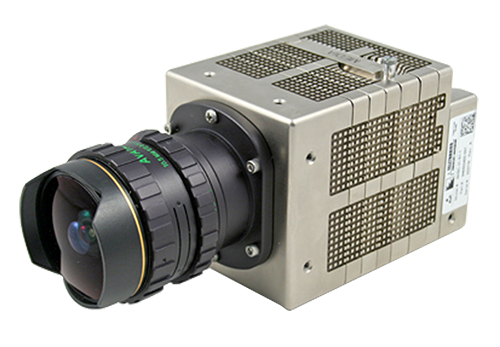
Published in Vision Systems Design
Photogrammetric high-speed camera missions capture sixdegree-of-freedom motion data that enable completion of airborne certification programs.
An accurate prediction of the trajectory of a store released from an aircraft is critical in assessing whether the store can be released safely as well as if it will accurately reach its target. The high-speed cameras used for acquiring data that characterizes aircraft performance and avionics/equipment must be designed to perform optimally, accurately and reliably in harsh conditions, due to the high cost of keeping a test platform in the air.

Figure 1: The nHSC-31-S1 camera is a standalone and/or networked high-speed camera that is capable of 500 fps operation at full resolution, and includes an integrated Compact-Flash recorder to allow easy removal of critical post-test data.
For manned aircraft and UAVs, a number of airborne applications including stores separation, missile deployment, and landing gear analysis, requires Flight Test Instrumentation (FTI). For these types of FTI applications, the photogrammatic data is captured in order to characterize the performance of the aircraft, the platform’s avionics, and the performance of other equipment (Figure 2).
FTI typically involves the use of compact, lightweight, and rugged high-speed cameras capable of capturing moving images with exposure times for each image of less than 1/1,000 second or frame rates in excess of 200 frames per second (fps). Such cameras primarily record fast-moving objects as digital images onto a storage medium.
After recording, the images can be played back in slow motion to examine the motion for scientific study of transient phenomena. Early high-speed cameras used film to record highspeed events, but have been superseded in recent years by entirely electronic devices. These modern cameras use either a CCD or a CMOS active pixel sensor that typically records over 400 frames per second onto DRAM.
Read the full article here.